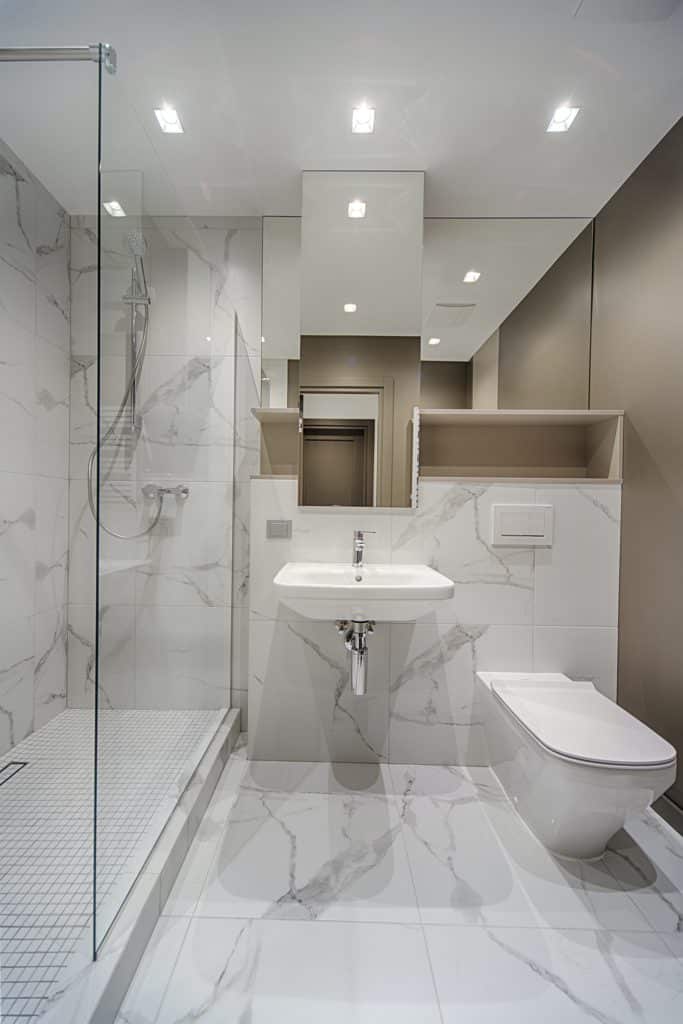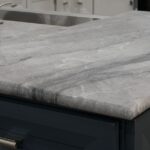Natural rock bathroom is the new trend that has been going around lately. We all love the experience of showering in a waterfall and getting in touch with nature. So, what if we could do that inside our home?
Search around Google and you’ll see some amazing designs. Natural rocks, irregular and varied bricks, plants growing around the bathtub, and many other creative approaches to this. It’s an innovative rustic design that brings many feelings of simplicity and calmness.
Still, while it looks great, putting materials such as natural rock and stone into a bathroom can come into its own set of problems. While that doesn’t mean you shouldn’t do it, it’s important to know what exactly you’re getting into if you want to follow through with it.
The Problem With A Natural Rock Bathroom
When you’re dealing with natural rock, especially in a bathroom, there are two main things you need to watch out for: humidity and texture.
Humidity
If you’ve had a bathroom for at least a year you’ve probably had to deal with mildew. It’s pretty much inevitable. Those things can thrive even with small amounts humidity and can hide themselves in the smallest crevices. And once they manage to develop enough, they start spreading everywhere.
One of the problem is that the tiles we use for our bathrooms are a bit porous. And they also have those gaps between them which can be even more. Porosity allows water to get inside and makes it harder for it to get out. You can’t pull it out just by using a squeegee, for example.
The thing is, natural rock can be even more porous. The ceramic used for bathrooms and other rooms are made with porosity in mind, so manufacturers aim to decrease it as much as possible. Natural rock is naturally porous, and trying to solve that can be very problematic.
The natural stone used for tiles and countertops is also porous, but after being turned into flat slabs, it’s much easier to apply a sealer to make it waterproof. Natural rock is very irregular, so sealing it is more difficult. Not only that, but sealing can make it pretty shiny, which can take away some of the natural look it has.
Texture
Are you used to walking barefoot outside?
It’s important to remember that natural rock can be very irregular. That is, if you use it for the floor, you’ll have to deal with the fact that it can have a very noticeable and irregular texture. It’s completely different from the smooth ceramic tiles that we’re used to. It’s like walking on brick, except it’s even rougher.
During the first few days, you may also notice that some spots are sharper than others and may end up getting your feet hurt because of them. You’ll then need to either learn to avoid those places, or get someone to fix them. Otherwise, that can cause some accidents.
However, the other extreme is also possible. Some rocks can be extremely slippery when wet. In a place that can have lots of water pretty easily like that bathroom, having a slippery floor is a major health hazard. Slipping on a wet floor is one of the most common cause of accidents inside a home, so it’s something to watch out for.
Floor tiles made for bathrooms are already made with this in mind, and have gone through intensive testing in order to figure out a texture that’s not slippery when wet. With natural rock, that’ll depend highly on the kind of rock and the supplier. It’s much harder to be certain of how it’ll be.
What You Can Do About It
While using pure natural rock can be a bad idea, that doesn’t mean you have to completely ditch the natural look for your bathroom. Instead, you can opt for well-treated natural stone to adorn your it, getting the same look but with a touch of finesse.
Natural stone tiles still have some of the same problems as natural rock. The main one being porosity. However, the natural stone used for that are already well-know and widely-used kinds of stone, like marble, granite, and slate.
As you may imagine, marble is able to give a great look to any room. It’s a beautiful stone, whatever the color. The main matter is that it needs a lot of maintenance. Of the commonly used stones, it’s the softest and most porous. However, being so commonly used, it’s also easier to keep it in shape.
Granite and slate are much harder and durable, and can also be a great choice. Slate already comes with a natural rock-like look. It’s more subtle than the others, in that it doesn’t have radical color variations, so it can look like a nice rock wall.
Natural granite is wilder, varying greatly in lightness and color and having well-pronounced veins running through it. It’s a great pick to impress your guests, as it’s really hard not to notice it.
Those kinds of stone still require regular maintenance, in that they should be resealed once a year and need to be polished once in a while. Still, it’s much easier to maintain flat shiny surfaces than irregular formations like rocks, so natural stone can give you an easier time while not sacrificing looks.

You Can Count On Us
If you’re looking for some natural stone to add to your house, you can count on us. Choosing the right kinds of stone for the many rooms in your house can be quite difficult, as there is a great variety of stones, colors, and sealers to choose from.
Here at Eagle Stones, we deal with many kinds of stones and specialize in granite and marble. If you get in contact with us, we’ll send a specialist to your home to figure out the best selection of stones for you. It’s easy and free, just fill out this form, and we’ll get in contact.
This is the best way to bring life to your home and give it a great selection of amazing stones.



